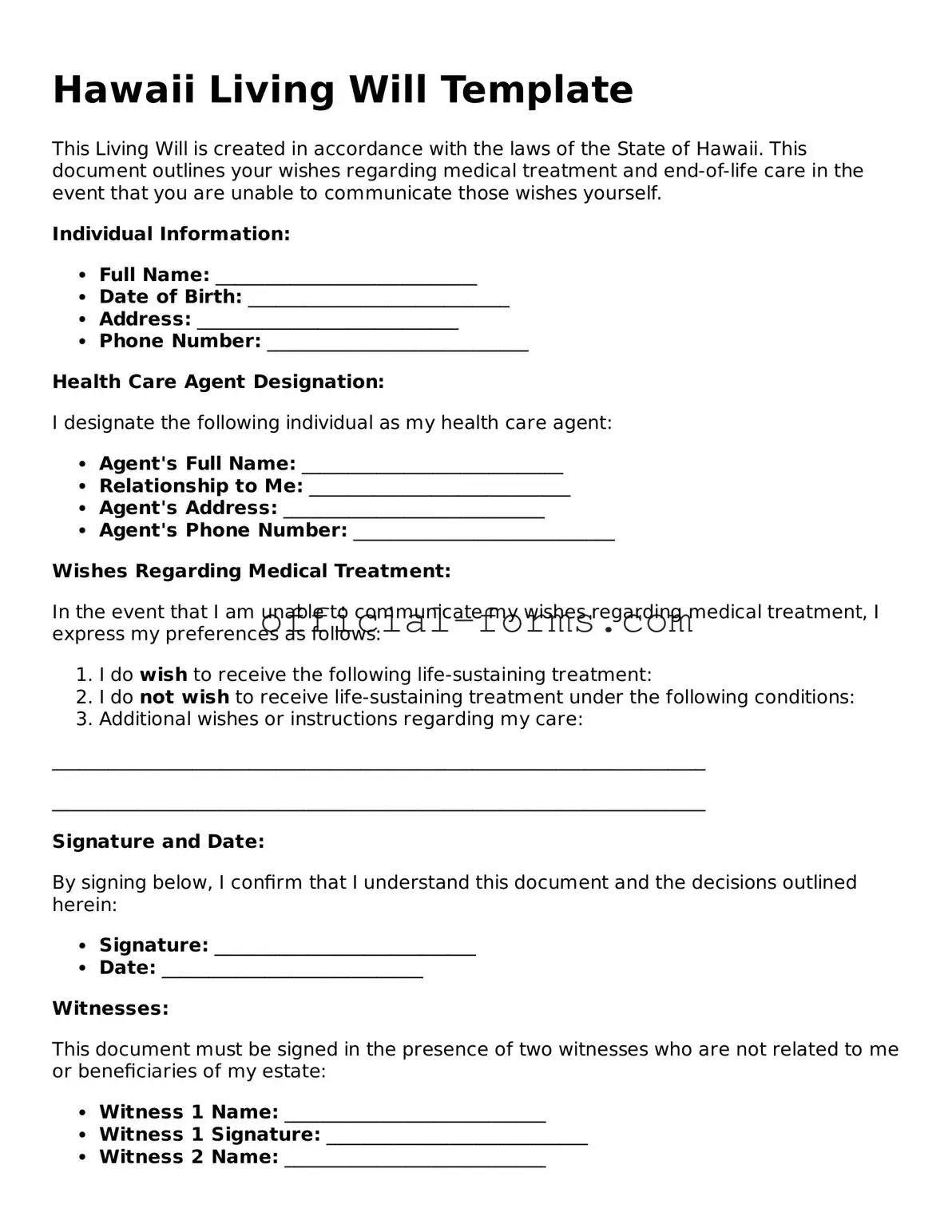Creating a Living Will in Hawaii is an important step in ensuring that your healthcare wishes are respected. However, many people make mistakes when filling out this form, which can lead to confusion or even legal issues down the line. Here are six common mistakes to avoid.
One frequent error is failing to clearly specify treatment preferences. It’s essential to articulate your wishes regarding life-sustaining treatments and other medical interventions. Vague language can lead to misunderstandings among healthcare providers and loved ones. Be as specific as possible to ensure your intentions are understood.
Another mistake is neglecting to sign and date the document. A Living Will is only valid when it is properly executed. Without your signature and the date, the form may not hold up in a medical setting. Always double-check that you have completed this crucial step.
Some individuals forget to name an alternate healthcare proxy. While it’s important to designate someone to make decisions on your behalf, having a backup is equally vital. Life circumstances can change, and your first choice may not always be available when needed. Naming an alternate ensures that someone will always be there to advocate for you.
Additionally, many people overlook the importance of discussing their Living Will with family members. It’s not enough to fill out the form; loved ones should be aware of your wishes. Open conversations can help prevent conflicts and misunderstandings during emotionally charged times.
Another common pitfall is using outdated forms. Laws and regulations can change, and it’s crucial to use the most current version of the Living Will form. Check with local resources or legal professionals to ensure you have the latest information.
Finally, some individuals fail to store the document in an accessible location. After completing the Living Will, it should be kept in a place where it can be easily found by family members or healthcare providers. Consider giving copies to your healthcare proxy and primary care physician to ensure that your wishes are known when it matters most.
